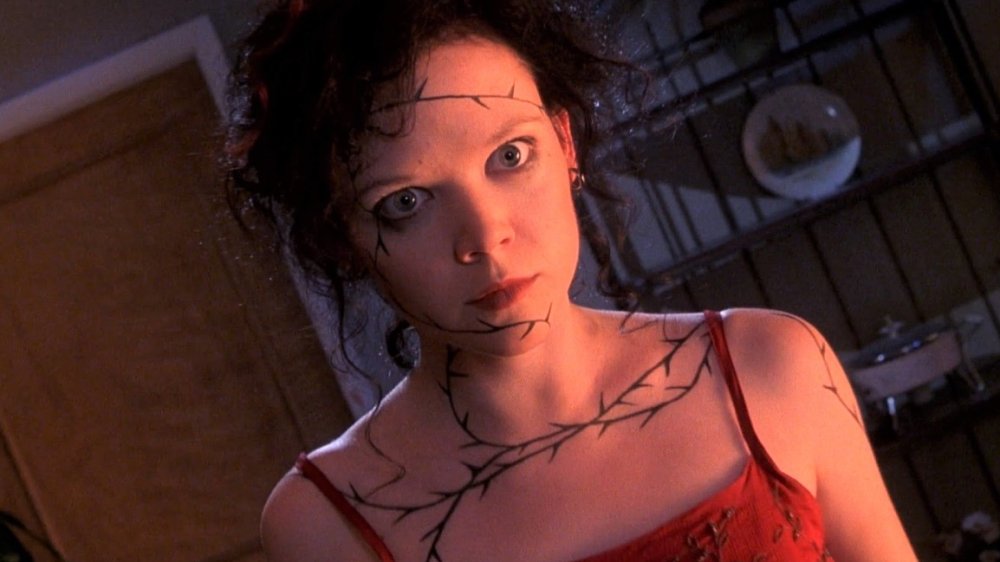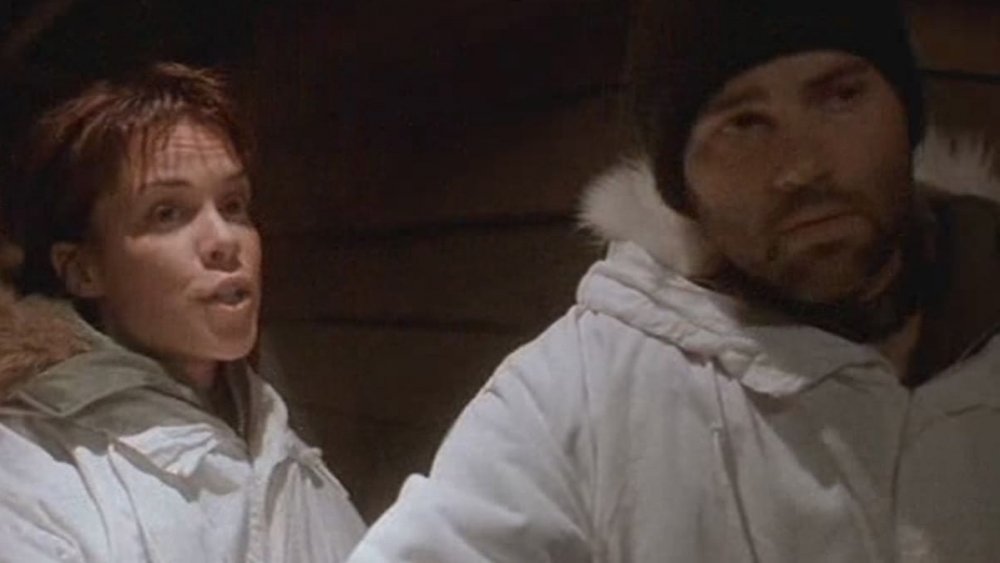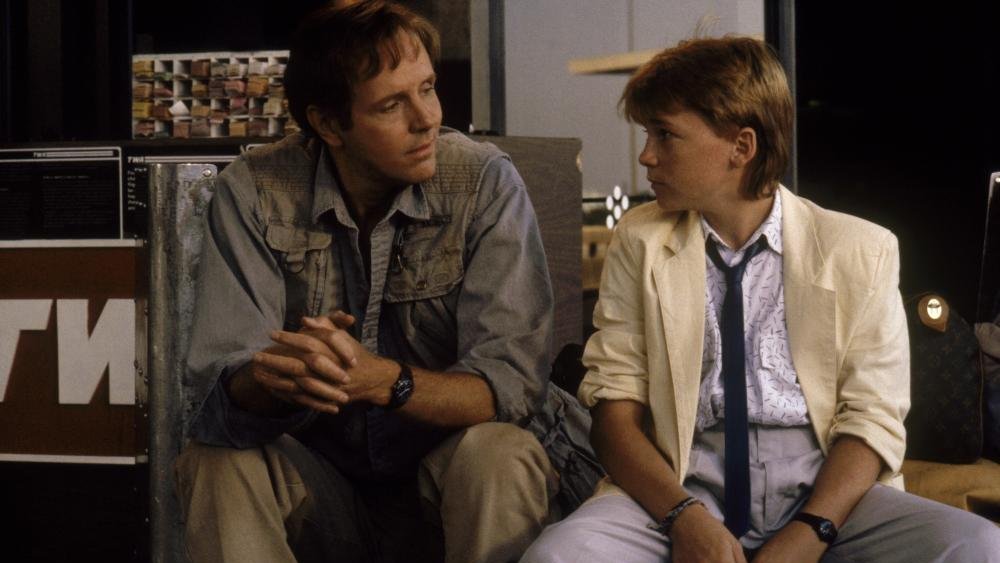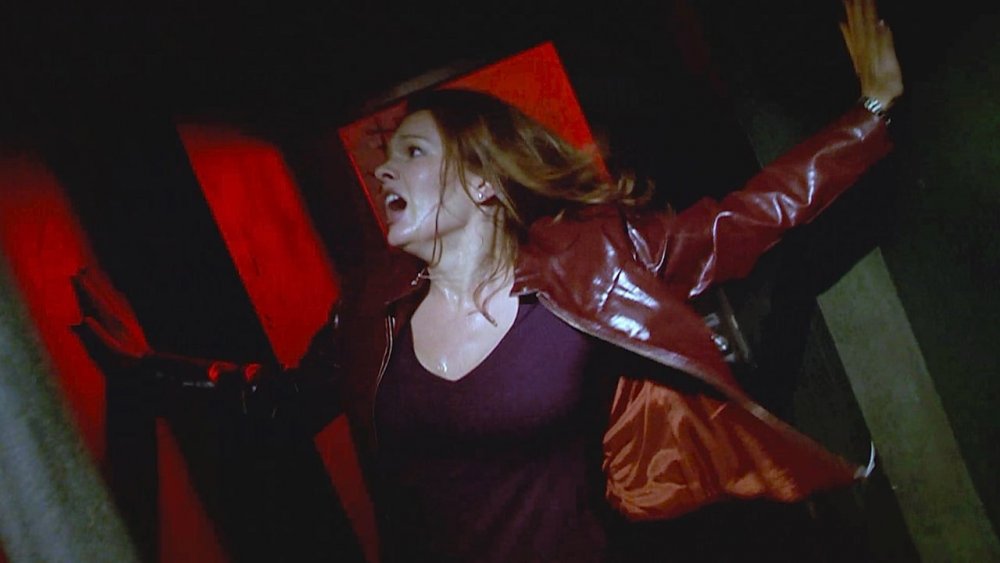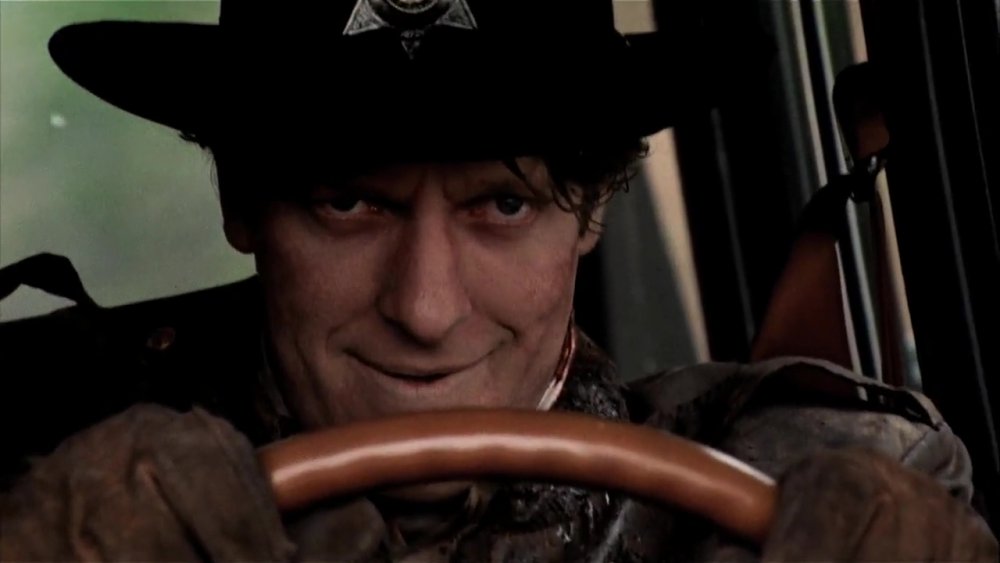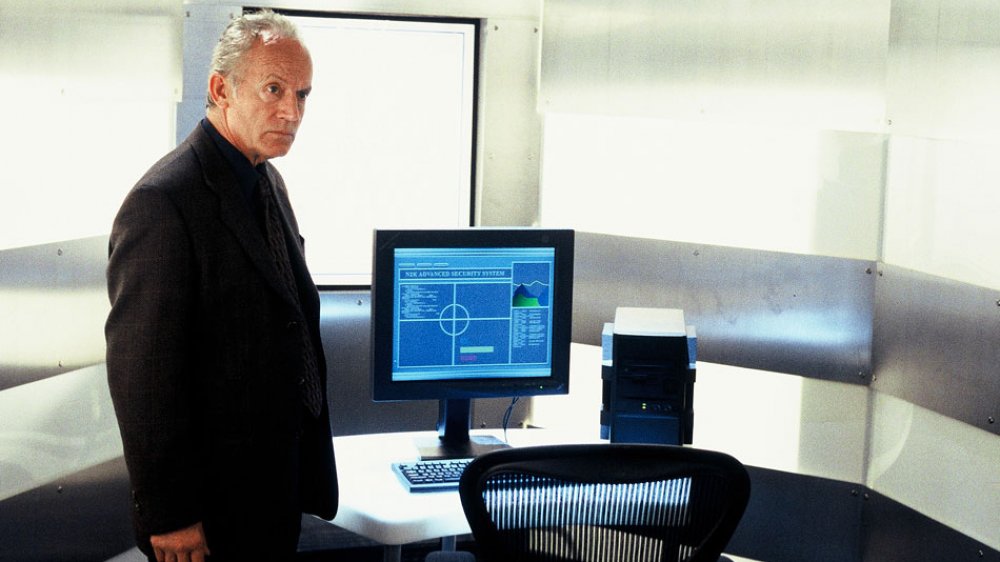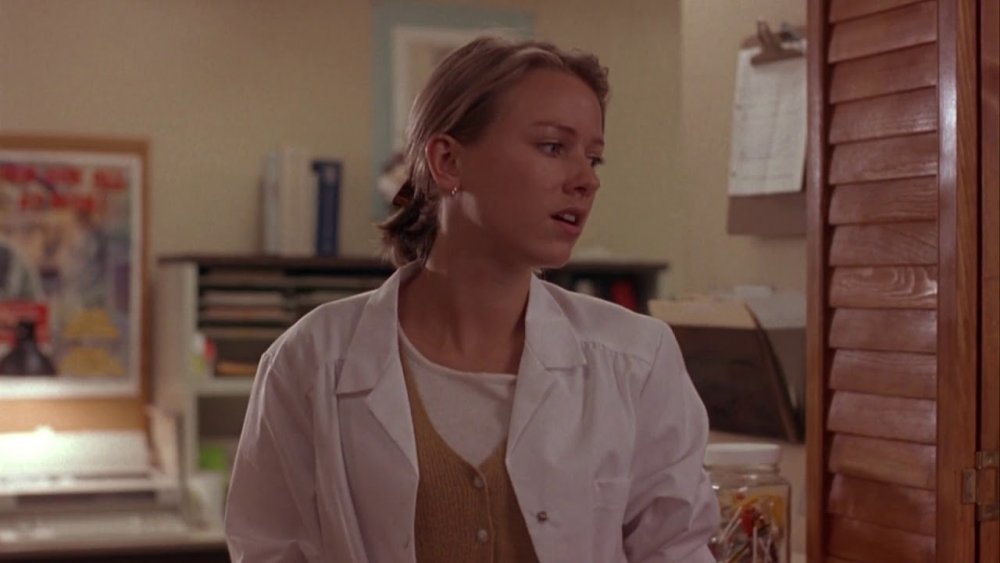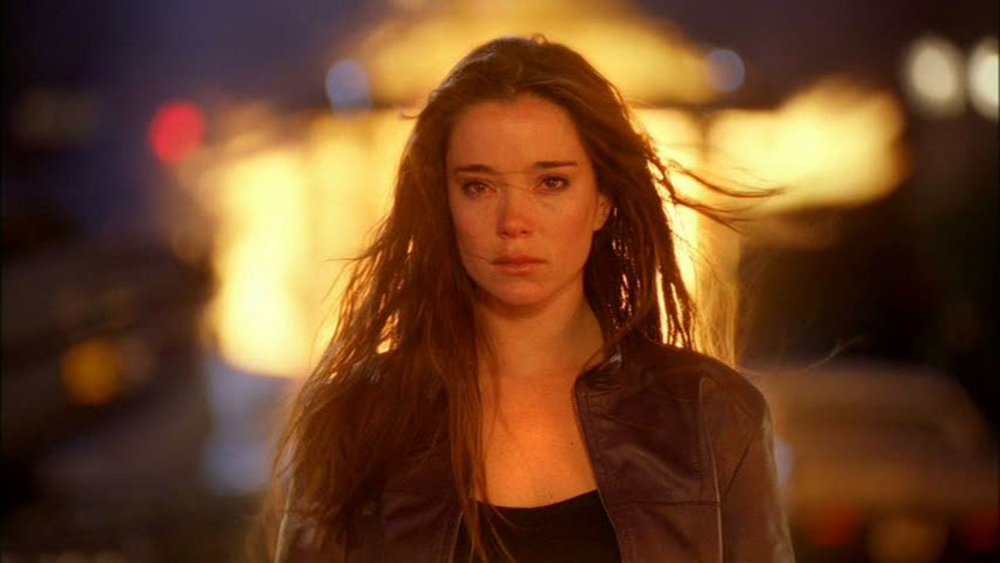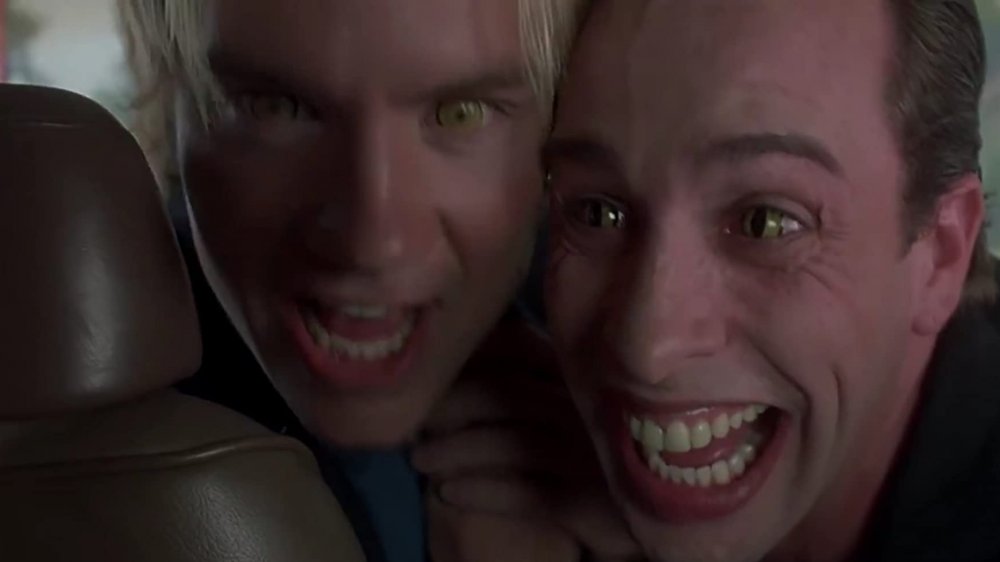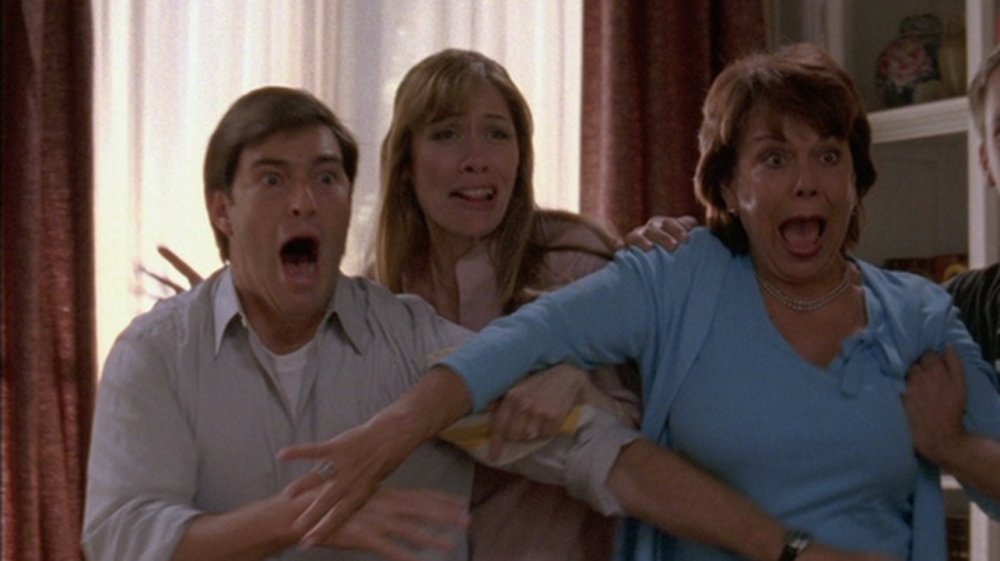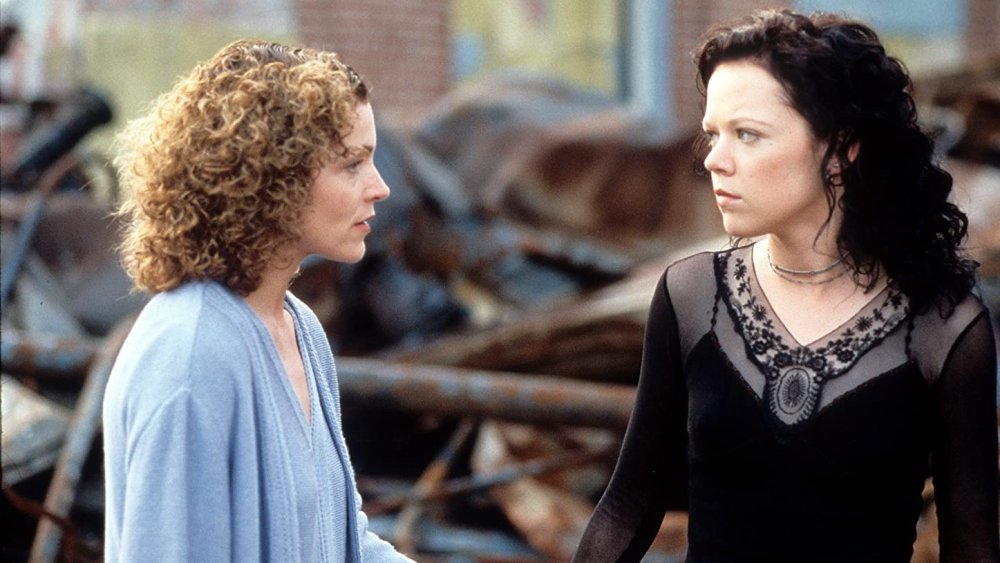The 5 Best And 5 Worst Stephen King Movie Sequels
Stephen King is one of the most famous and widely read authors of all time, and because he rose to prominence just as things like genre blockbusters and film franchises were beginning to grow in Hollywood, it makes sense that people wanted to latch onto his stories very early on and make them into films and television series. At this point, nearly all of King's novels have been adapted in some form, and so have many of his short stories and novellas, to the point that you can feel like you know the guy's work even if you've never read any of his books.
And thanks to Hollywood's love affair with King, his stories have given rise to the phenomenon of cinematic sequels made without his involvement and often only loosely tied to the original work. These sequels are all attempts to capitalize on the Stephen King brand in way or another, even if King himself has no role to play in them, and because of his detachment from them, they vary widely in quality, subject matter, and tone. Some, perhaps surprisingly, are rather good follow-ups to King's tales. Others, perhaps not surprisingly, are very much not. We took a long, strange trip into the world of Stephen King-less Stephen King sequels (in other words, no Doctor Sleep or It: Chapter Two here), and we found the very best and the very worst.
Worst - Sometimes They Come Back ... for More is chilling for all the wrong reasons
It's honestly a bit of a minor miracle that Sometimes They Come Back managed to spawn one pretty entertaining sequel with Sometimes They Come Back ... Again. The problem is that the very presence of a part two and its relative success meant that an another sequel was possible. Sadly, part three didn't work out nearly as well.
Like the previous films, Sometimes They Come Back ... for More follows a group of ordinary people as they struggle against demonic forces that have risen up from the netherworld to kill, but this time, the action is transferred to a mining installation in Antarctica. The goal might've been to evoke the claustrophobic nature of films like John Carpenter's The Thing, but the end result is something bland and cold, with barely any of the wild demonic energy that the first sequel brought to things. Though there are attempts to broaden the mythology, including a pentagram across a map of the world that's meant to suggest some kind of global demonic plot, that's all hampered by a lackluster script and a low budget. By the time the actual monsters arrive, there's not a lot to get excited about.
Best - A Return to Salem's Lost goes in a weird and wonderful direction
King's second novel, Salem's Lot, is the story of a small New England town that's systematically taken over by vampires, so you'd think that going back there would be rather fruitless unless it was for the purpose of an all-out vamp hunt. It's one of many King stories that leaves very little room for a sequel unless you're willing to think way outside the box. Thankfully for all of us, director and co-writer Larry Cohen was the king of outside-the-box horror filmmaking.
A Return to Salem's Lot does exactly what the title promises, taking us back to the town and revealing that it's still quite clearly overrun with vampires. But they're not just snarling monsters. Cohen makes the high-concept choice to have the point-of-view character be an anthropologist who's fascinated to find a fully functioning vampire society in the town, and to make things more interesting, they want him to write about how they live. So he and his son get to spend a little while simply walking around a vampire town, learning the ins and outs of their way of life even as he and his son are sucked deeper into their web. The result is a black comedy that, while sometimes showing its low budget, still manages to prove itself as a fascinating showcase for how to do a sequel that goes in the absolute opposite direction of the original film.
Worst - Children of the Corn: Revelation is an incredibly boring sequel
None of the Children of the Corn sequels are going to go down as classics. The central concept works for a short story, but it frays a bit when stretched out across even one feature-length film. Try to stretch that same idea out across half a dozen sequels, and you've got problems. Still, the Corn sequels can work in their own low-stakes way if the filmmakers are willing to take some steps to grow the mythology. Or they can do what Children of the Corn: Revelation does and just drag on for 90 minutes without any real intrigue.
To be fair, the film isn't working with a massive budget, but even with those constraints, there's a lack of invention here. Revelation follows a young woman who goes to find her grandmother in a rundown apartment building that, surprise, happens to be inhabited by killer kids who grow bloody corn in a field outside. Why is the corn bloody? Well, it has something to do with the souls of the kids, but like a lot of other things going on in this film, that little touch of terror doesn't go anywhere interesting. Revelation is a film that leans more on atmosphere than plot, but even the atmosphere isn't especially gripping. It all just... kind of exists as a way to keep the franchise going. Still, there is something to be said for the moment when the franchise finally kills someone by strangling them with sentient corn stalks.
Best - Pet Sematary Two is even gorier than the original Stephen King film
Pet Sematary is, quite famously, the story Stephen King was worried might be too unpleasant to publish. When it finally was published, director Mary Lambert adapted it into one of the most famous and frightening King films. Then, Lambert decided to take things one step further with a sequel ... without King's involvement.
Because of the rather tragic ending of the first film, Pet Sematary Two follows a complete different family who's just moved to Ludlow, Maine, and they're grappling with their own family tragedy. What sets the film apart, aside from the entirely new cast of characters, is Lambert's willingness to lean in as far as possible to the unpleasant gory aspects at the heart of the story. This time around, the chief evil zombie character takes the form of a local sheriff (played with zest by Clancy Brown), while a dead dog takes the place of a dead cat, and a dead mother replaces a dead son. It all unfolds with a similar rhythm to the original Pet Sematary, but while the first film is an emotional gut punch, Pet Sematary Two is all guts. That ultimately means it's inferior to the original film, but it's still packed with enough black comedy and slick visual effects to make it a must-see for completists, as well as people who wanted Pet Sematary to be even darker.
Worst - The Mangler 2 is too dated for its own good
Yet another film franchise derived from a single Stephen King short story, The Mangler began its cinematic life with a truly wild and weird Tobe Hooper adaptation of the original text. Then, seven years later, a sequel arrived with a very 2002 twist — what if the evil spirit that possessed a killer laundry machine in the original somehow became a computer virus instead?
Yes, the "mangler" of The Mangler 2 is a killer computer virus downloaded into a prep school's new state-of-the-art security system as a prank by the daughter of the man who built the system. The idea here was, of course, to introduce some cool, early 2000s cyberspace fun into the equation, and while that's not necessarily a terrible idea, in practice, it unfolds as a big mess.
For one thing, the prep school in question is often made up of a bunch of poorly lit cinder block rooms that the main characters wander around in. For another, the actual horror moments simply lack the budgetary inventiveness to really play as scary. Then there's the script, which tries to latch onto some clever 2000s teenspeak, but instead, it spits out some phrases that truly feel like no teen from any era would ever use. But hey, at least someone still gets killed by a laundry machine at one point.
Best - Children of the Corn IV: The Gathering does a pretty good job of worldbuilding
The most prolific Stephen King-based movie franchise ever isn't based on one of his novels, but instead, it's based on a single short story about killer kids in a remote Nebraska town. To date there are ten Children of the Corn films, and eight of them are ostensibly sequels to the original 1984 film that all try to make "killer kids obsessed with corn" into something new. Most of them, unsurprisingly, struggle with this.
If you're looking for bright spots in the Children of the Corn series, though, the fourth installment (Children of the Corn IV: The Gathering) is a notable one. The film stars a young Naomi Watts as a woman who returns home to help her mentally ill mother, and she suddenly finds herself in the middle of a new outbreak of killer kids. What's particularly notable about The Gathering, apart from Watts' solid performance, is the way it attempts to really get closer to the "why" of the whole franchise. There's a genuine effort at mythology building here that many of the other films don't have. That, combined with some amusing death scenes, makes for a solid, if extremely flawed, entry in the franchise. Oh, and if you're looking for another solid Children of the Corn sequel, check out Children of the Corn: Genesis, which does a nice job reinventing the mythology in a rather contained way.
Worst - Firestarter: Rekindled is a Stephen King sequel that fails to heat up
If you're going to do a sequel to a Stephen King story, Firestarter actually feels like a reasonable place to start. King's novel about a young girl with pyrokinesis ends with a fair amount of loose ends, at least enough to carry on into a new chapter. It makes total sense that someone would get the idea to tell a story about what happened to Charlie McGee after a she grew up. It makes less sense to spread that story out across a two-night TV miniseries that was then cut together into a nearly three-hour home video release.
There are some good things in Firestarter: Rekindled. Marguerite Moreau is doing her best to inject some real heart into a slightly older Charlie, and Malcolm McDowell is putting on his villain voice, sometimes to great effect. There's even a brief appearance by Dennis Hopper as a guy who can see the future, something the film sort of addresses and then sort of drops. There are even some interesting ideas within the narrative about how Charlie's power changes as she ages, particularly when it comes to keeping her more adult emotions in check. The problem is that none of that can carry the whole miniseries for the entirety of its runtime. So much of Firestarter: Rekindled is about getting to the interesting stuff that when something interesting finally happens, it's barely a blip. There was a good idea here, but the execution is off.
Best - Sometimes They Come Back ... Again has a lot of fun with its monsters
Oddly, while there have been sequels to Stephen King novels on several occasions, his short stories are the ones that most often get made into franchises. "Sometimes They Come Back," a tale from King's Night Shift collection, has spawned three different, loosely related films since it was first published, but the second one has proven to be the most interesting.
Like the first film, Sometimes They Come Back ... Again is the story of a man facing demonic forces tied to a tragic event in his past, in this case the murder of his sister. When the young thugs responsible for the murder manage to, well, come back from Hell, they take the form of demonic tormentors who are determined to finish what they started.
While the first Sometimes They Come Back film certainly leans heavily into the demonic imagery near the end, the sequel goes all-out with it, until the climax is just dripping with over-the-top ritualistic violence. It's a film that traffics in quite a few horror cliches, and it's not exactly a classic, but Sometimes They Come Back ... Again's willingness to just go full-tilt with its monsters makes it an extremely watchable film, anchored by the scenery-chewing madness of Alexis Arquette.
Worst - Creepshow 3 just doesn't hold a candle to the original two films
Creepshow 3 is rooted in a good idea. After all, the whole concept behind Creepshow is an anthology of horror stories that are only loosely linked, so provided you keep up the tone of the original, you can theoretically do whatever you want. We know this now because Shudder has managed to produce a well-received Creepshow TV series that preserves both the tone and the anthology format of the first movie.
Sadly, this isn't the case with Creepshow 3, a film made without the involvement of original creators Stephen King and George A. Romero and one that retains very little of the darkly comic charm that came from the first two films. Once again, we're presented with a series of loosely linked stories that are meant to convey a certain kind of impish, humorously terrifying style, but the scares don't land, and the attempt at humor just comes off as mean-spirited. Horror anthologies can provide a great platform for filmmakers to tell shorter-form scary stories on their way to something bigger, but this film is a poor use of the Creepshow name.
Best - The Rage: Carrie 2 is a sequel worthy of Stephen King's name
Sequels to horror classics that are set years later and follow a new generation of characters are common, but they're more likely to happen with franchises. Carrie, Brian De Palma's adaptation of Stephen King's debut novel, didn't intentionally try to start a franchise. It's a film in which (spoilers) almost everyone involved dies, leaving little room for sequels. And yet, The Rage: Carrie 2 did try to make one happen more than 20 years later.
Did it actually work? Well, while the film is dripping with late-'90s horror cliches from the font used in the credits to the super dated soundtrack, as well as the random cuts to black-and-white interspersed throughout the movie, it actually does manage to find its own way. It's the story of Rachel Lang, Carrie White's long-lost half-sister, who has the same telekinetic ability but a bit less of the social awkwardness. In the wake of her best friend's death, Rachel finds herself diving deeper into an exploitative and cruel high school subculture, and it awakens something in her that she's been struggling to embrace.
It's not the instant classic that Carrie was, but The Rage does manage to do some rather inventive things with its own spin on telekinetic horror. In particular, the climactic sequence is kind of stunning, and though it's not exactly a timeless film, the movie has a certain sense of wit about the time and place it's coming from. It's a movie that manages to do something interesting with a concept that shouldn't have worked in the first place.
